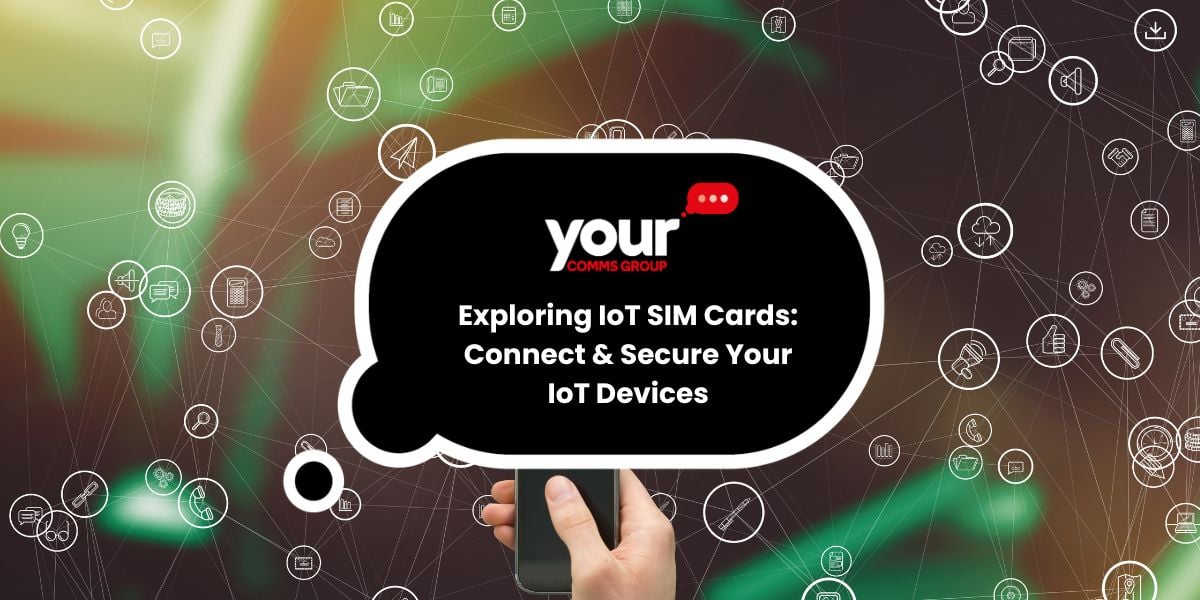Tracking Food Supply Chains with Sensor Technology
Why do businesses need to track the food supply chain? Food tracking makes it possible to perceive food products' production, transformation,...

In today's rapidly advancing technological landscape, the Internet of Things (IoT) has emerged as a ground-breaking evolution, transforming how we interact with the world.
But at the heart of this transformation lies a critical component: IoT networks. Understanding what IoT networks are and how they function is essential for grasping the full potential of IoT technologies.
IoT networks refer to a complex system of interconnected digital devices, mechanical and digital machines, objects, animals, or people equipped with unique identifiers (UIDs) and the ability to transfer data over a network without requiring human-to-human or human-to-computer interaction.
Now supercharged by 5G technology, IoT networks form the backbone of industrial and commercial applications such as EV chargers and vehicle monitoring systems, facilitating seamless communication at unprecedented speeds and reliability.
This technological leap enables the integration of 5G into IoT frameworks, enhancing the efficiency and intelligence of electric vehicle charging networks and real-time vehicle diagnostics and monitoring. This advanced synergy substantially supports increased connected devices within the industrial and commercial sectors, dramatically reduces latency, and enables real-time data processing and analytics.
It paves the way for innovative applications and services, optimises operations in EV charging infrastructures and vehicle management, and promotes sustainable and efficient transportation solutions.
IoT networks connect devices and systems using various communication protocols, technologies, and architectures. Depending on the specific requirements of the IOT application, they can operate over short-range (e.g., Bluetooth, Wi-Fi) and long-range (e.g., LTE, LoRaWAN) communications.
IoT networks find applications in numerous fields, including but not limited to:

IOT networks’ capabilities and applications are only set to expand as technology evolves. With 5G, AI, and edge computing advancements, IOT networks will become more efficient, secure, and capable of handling increasingly complex tasks.
One of the most transformative applications of IoT in healthcare has been the development of remote patient monitoring systems. These systems leverage IoT devices, such as wearable health monitors and home-based diagnostic devices, to continuously collect patient health data.
For instance, a heart rate monitor worn by a patient with cardiovascular disease can transmit data directly to healthcare providers in real-time. This allows for immediate response to potential health issues and reduces the need for in-person visits, making healthcare more accessible and efficient.
In smart homes, IoT networks have revolutionised energy management through devices like smart thermostats. A prime example is the Nest Learning Thermostat, which learns from the homeowners' habits and adjusts the home's temperature accordingly to enhance comfort while reducing energy consumption.
It can detect when the house is empty, turn down the heating or cooling to save energy and be controlled remotely via smartphones. This provides convenience and comfort and contributes to significant energy savings and environmental benefits.

The business world has seen substantial efficiency improvements through IoT, particularly in supply chain management. A notable example is the use of Radio Frequency Identification (RFID) technology in the retail sector.
Retail giants like Walmart have implemented RFID tags on products to track inventory in real time. This technology enables precise tracking of goods from the warehouse to the sales floor, reducing inventory errors, enhancing the customer shopping experience, and improving overall operational efficiency.
It exemplifies how IoT networks can optimise supply chain processes, reduce costs, and improve profitability.
Find out how Your Comms Group can help you leverage the power of IoT networks for your business needs.
Contact us today to discover the best solutions tailored for you.

Why do businesses need to track the food supply chain? Food tracking makes it possible to perceive food products' production, transformation,...

In the expanding Internet of Things (IoT) world, SIM cards enable devices to communicate and transmit data over cellular networks. However, not all...

In the digital era, the Internet of Things (IoT) is revolutionising how we interact with the world around us. IoT is making our environments more...